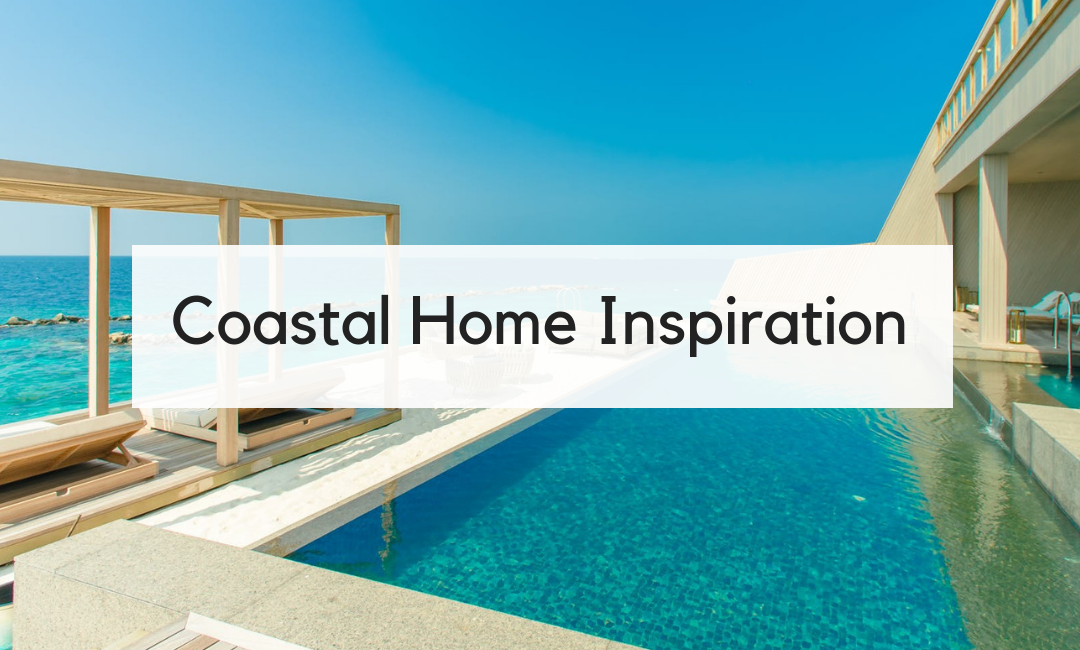The Pantone Color of the Year, Living Coral, naturally lends itself to coastal interiors. Pair it With Blue, Pair it With Seagrass Green, or Make it Monochrome with Living Coral for a Pretty Pink explosion. Starting with a two-tone color scheme in your coastal interior is a great way to introduce Living Coral to the space and add contrast.
Living coral has a muted hue to it, which makes us lean instinctually closer to pairing with natural, earth tones or pastel hues, rather than vibrant tropical colors, although we have seen some artists and retailers take a brighter approach in their use of Living Coral.
Accent Colors & Wild Prints
If you do op’t for brighter hues or utilize busy patterns, one idea to consider may be painting the trim of the space darker neutral hue to dial down the busyness. Coastal interiors always make us want to include busy prints – waves, palm trees, etc. A great way to include them but not have a maximalist explosion is to include them in throw pillows on neutral couches and chairs that you can easily swap out seasonally or when you get tired of them!
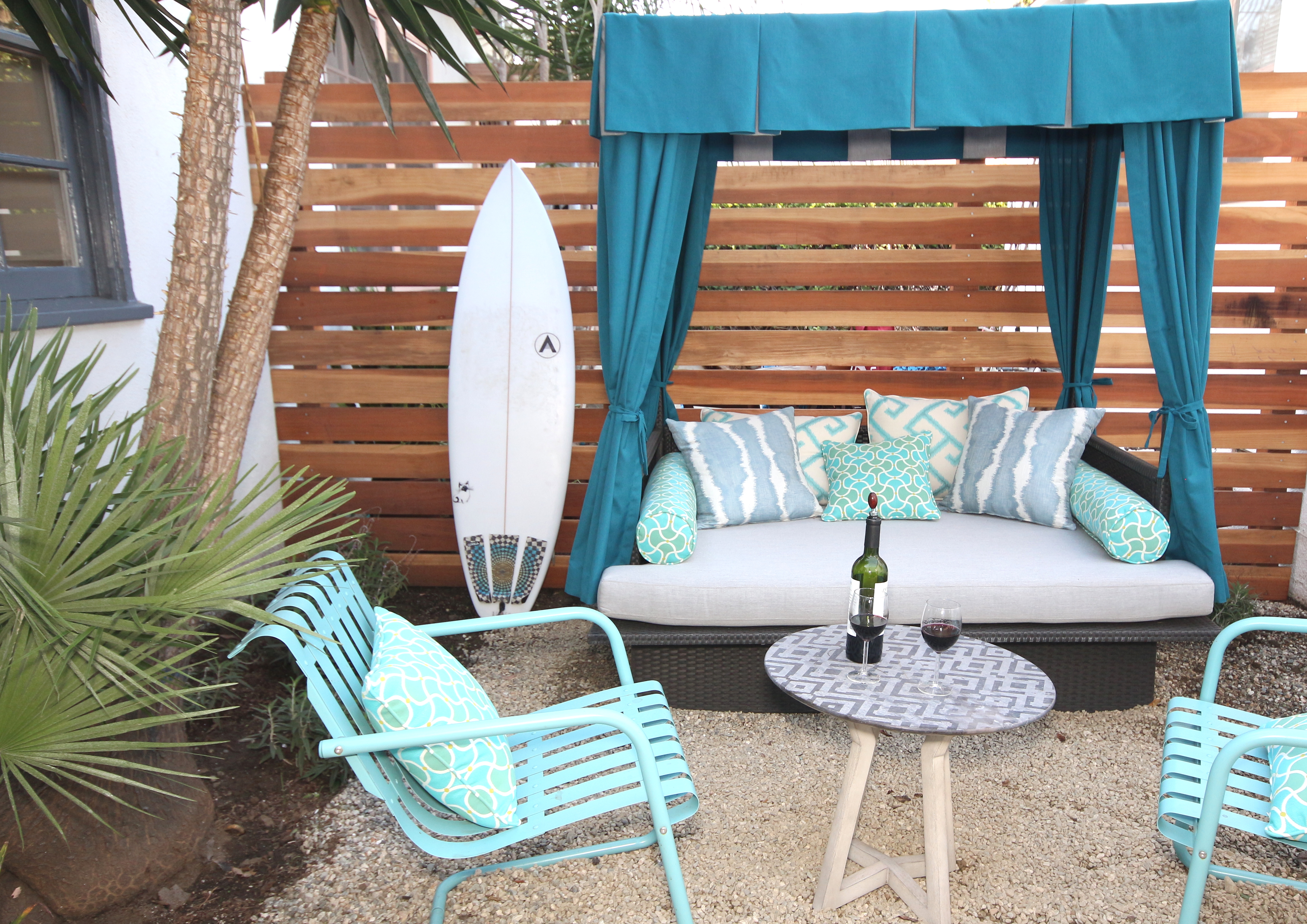
Pillows: CALICO SUNBRELLA FABRICS
Highlight Those Coastal Views
A great argument for going more subdued and monochromatic in your coastal home is to highlight the spectacular beach views with big full-wall windows and let the scenery do the talking! And while you’re at it, skip the window treatments. A million dollar view should always take center stage. Continuing the colors from outdoors in subtle accents is optimum indoor-outdoor living! Here’s a picture from our Bond at the Beach project, with stunning Santa Monica views:
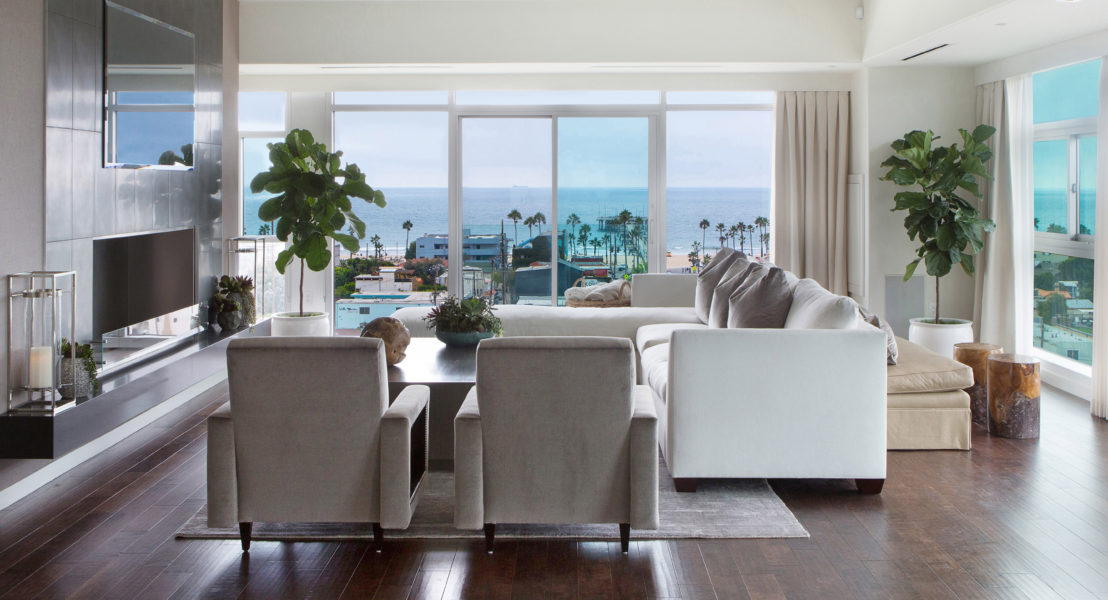
Accessorizing with Coral
I love clear apothecary jars because you can fill them with whatever you want! For a coastal look, fill them with sand, seashells, rocks, and wood. Bonus point if they’re shells you’ve collected yourself! This can be a fun DIY project and a way to personalize your coastal home and will add a lot of texture to the space. Speaking of texture…
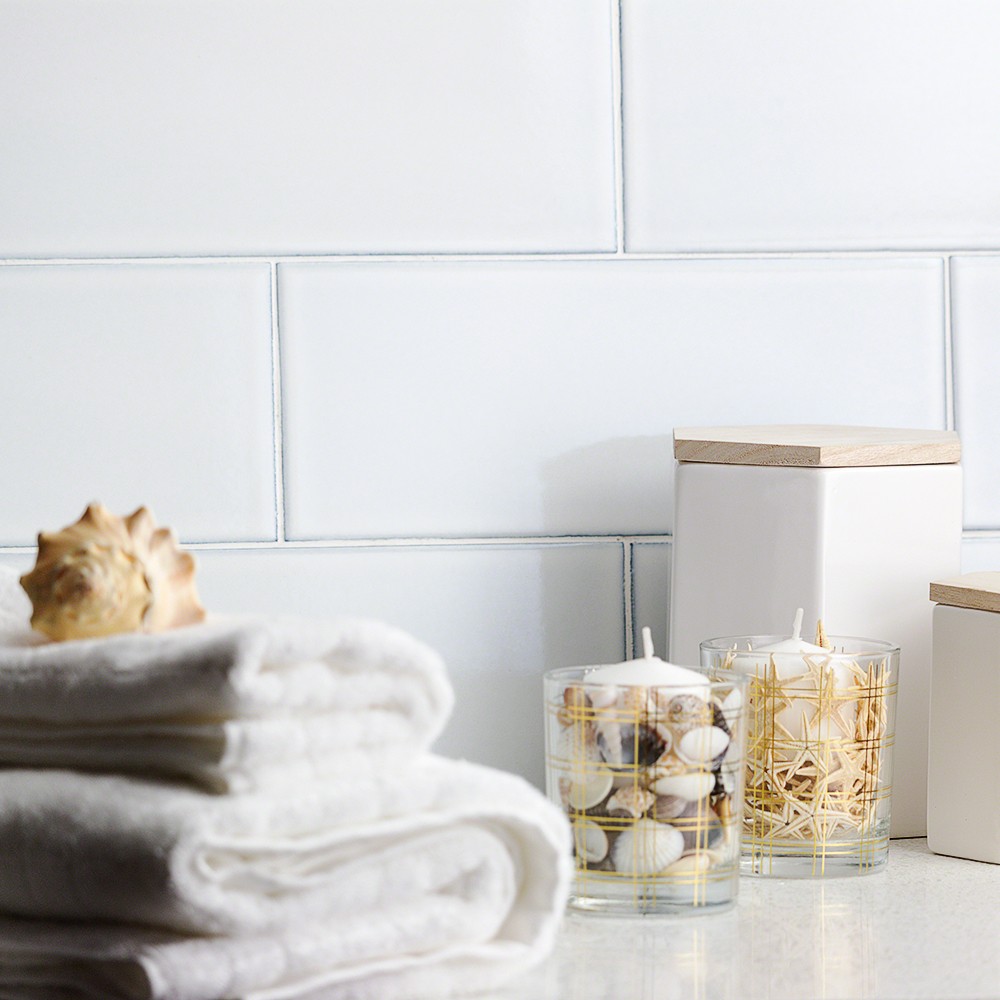
Tile Pictured: Lori Dennis Subway Tile for TileBar
Layer in the Coral Texture in Your Home
When we invoke nature in our homes, often what we’re trying to do is mimic their textures that make the space come alive. In coastal interiors, you want think about including jute and wicker, coral textures. You should also work in something shiny! Mirrors and mercury glass work wonderfully in coastal spaces.
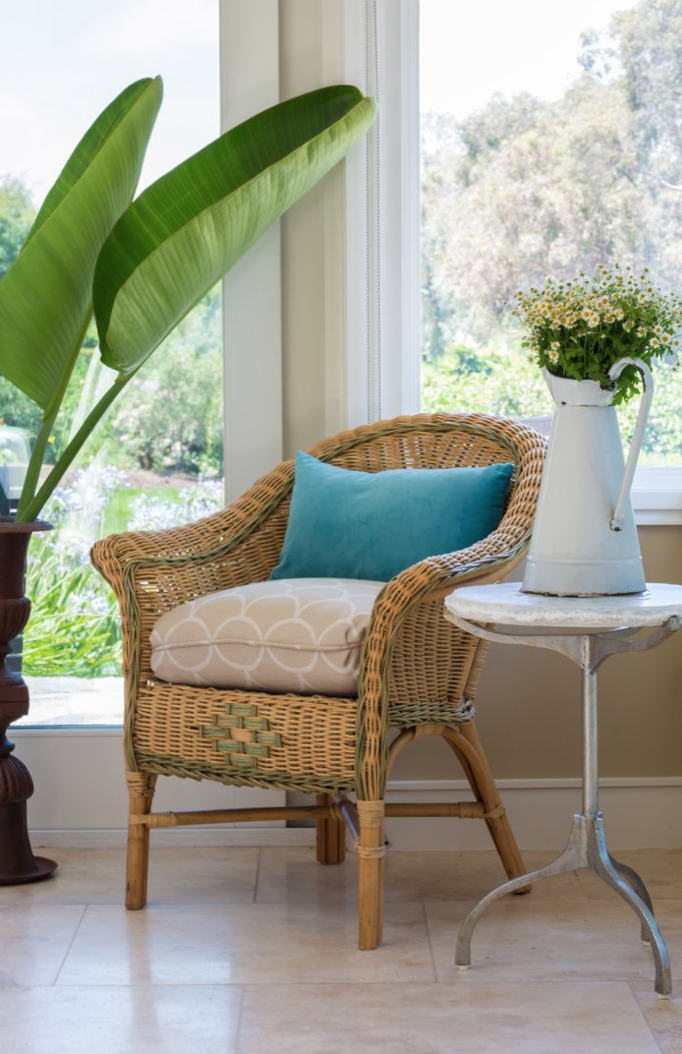
West Coast, Best Coast!
As Los Angeleno residents, we’re biased, but we also love the Florida gulf and the beaches of Mexico! Why is this relevant? Narrowing down specifically which coast your interior is trying to emulate will help direct a lot your design decisions. If you’re going for a contemplative Nantucket aesthetic, then neon and palm fronds are probably not in the cards for you the way they might be if you’re in Folley Beach, South Carolina.
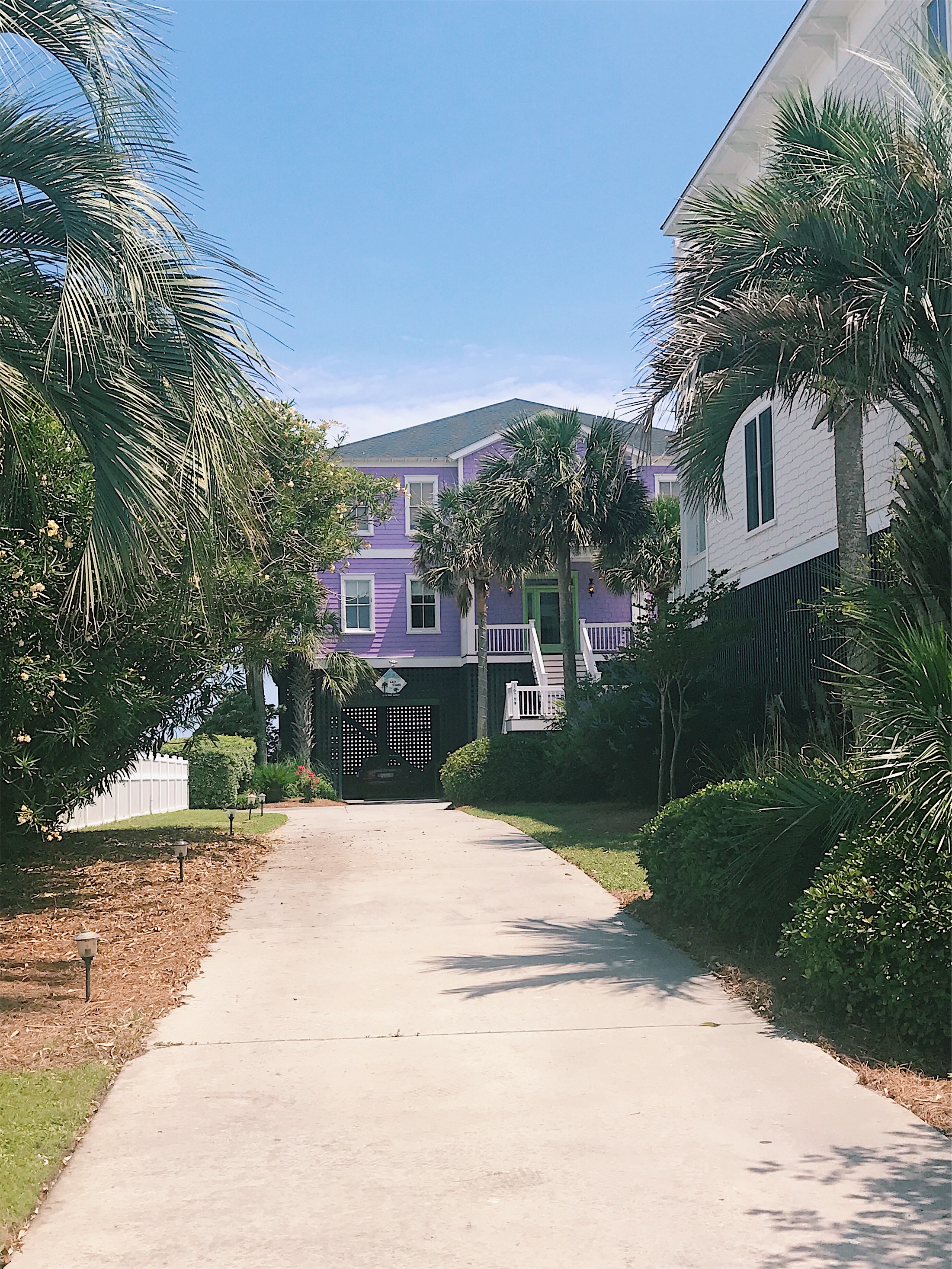
Coastal Farmhouse
Introduce some shiplap and industrial lighting if you’re aiming to stay on-trend with the coastal farmhouse look. We worked with the design team at White Sands Coastal to bring this Coastal Farmhouse project to life. Here is one of our favorite bathrooms from that project:
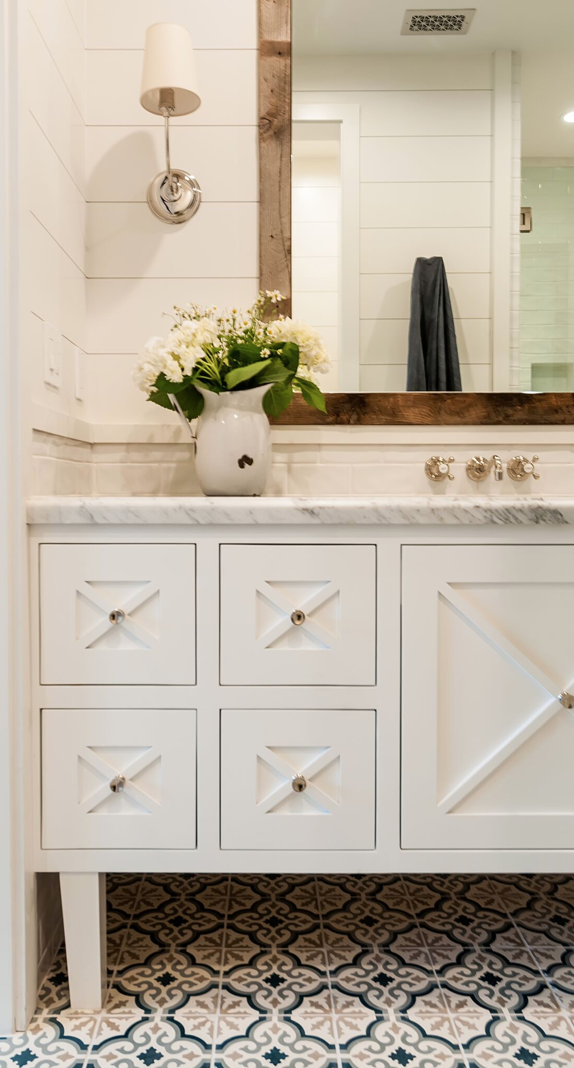
Go Midcentury
Exposed beams and playing up original architectural in your space is also a great idea. Feel like you have a dated 60s interior? Lean into it, rather than fight it! What’s more coastal iconic than an old 60s Coppertone ad? Here’s a design detail from a 60s beach cabin at the Jersey Shore:
How to Easily Maintain Your Beach House
You may think white is difficult to maintain at the beach, but slipcovering your couches and chairs in white is actually a great idea. You can always bleach them clean, plus with performance fabric technology being what it is, worrying about maintenance is all but a thing of the past. As for flooring, engineered veneer wood floors are easily maintained and come in a variety of colors and finishes that look fabulous and work well in spaces that may get damp like baths and kitchens or all over coastal homes where sand and sea can get tracked inside easily.

